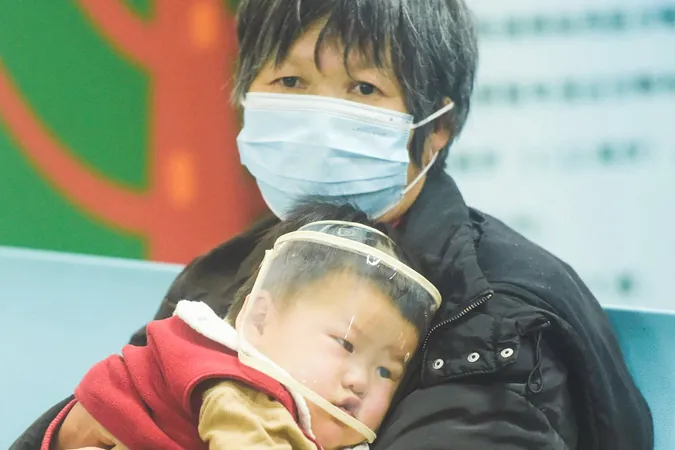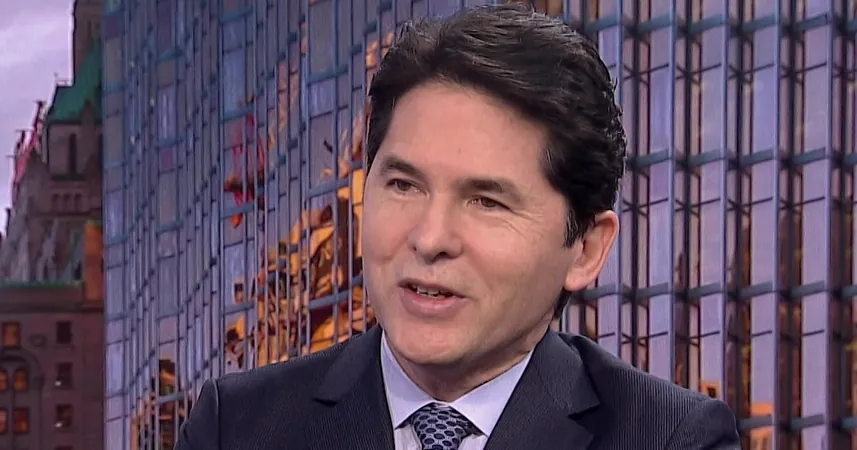
Surge in HMPV Cases Raises Global Concerns: What You Need to Know
2025-01-06
Author: Olivia
The HMPV Outbreak: Understanding the Severity
As the winter season unfolds, China is grappling with a significant rise in infections of the human metapneumovirus (HMPV). This surge has prompted countries like India, Malaysia, and Kazakhstan to also report cases, raising alarm bells worldwide.
Reports indicate a notable spike in HMPV cases across northern Chinese provinces, particularly among children. Disturbing images circulating on social media show hospitals straining under the pressure of increased patient loads. While the virus predominantly causes mild respiratory symptoms akin to the common cold and flu, it poses serious risks for vulnerable populations, including the elderly and those with compromised immune systems.
"Respiratory infections typically peak during the winter months," stated Mao Ning, a spokesperson from China’s foreign ministry. However, she reassured the public, claiming, “The diseases appear to be less severe and spread on a smaller scale compared to the previous year."
Experts are quick to clarify that HMPV should not be equated with COVID-19. Jill Carr, a virologist at Flinders University, noted, "The situation is very different from the COVID-19 pandemic," explaining that unlike COVID-19, which was a novel virus to humans, HMPV has been part of the viral landscape for years.
HMPV Spreads Across Borders
The UK Health Security Agency reported a slight increase in cases, particularly in children under five, raising concerns about potential transmission to Europe. Yet experts emphasize that the current rise in cases aligns with typical winter respiratory illness patterns. Dr. Sanjaya Senanayake, a specialist in infectious diseases, remarked, "China is experiencing a bad HMPV season, similar to tough flu seasons we've seen in the past."
In nearby regions, health authorities are vigilant. Hong Kong has reported cases, and both Cambodia and Taiwan are closely monitoring the situation. Cambodia's Communicable Disease Control Department has issued warnings about HMPV, drawing parallels to flu and COVID-19, while Taiwan's health officials are particularly concerned about its higher risk to the young and elderly.
A Global Perspective on HMPV and Public Health
While the spread of HMPV is being closely observed, Indian health authorities urge the public not to panic, describing it as “like any other respiratory virus.” Dr. Atul Goel of the Directorate General of Health Services reassured citizens that the virus typically causes mild flu-like symptoms.
Public health experts suggest that ongoing vigilance and timely communication from health authorities are critical in managing the rise of HMPV. They advocate for increased public awareness regarding the virus’s symptoms, which include cough, fever, nasal congestion, and fatigue – all of which typically appear three to six days post-exposure.
The Bottom Line: Is HMPV a Cause for Concern?
While the uptick in HMPV cases around the globe is noteworthy, the consensus among health experts is that immediate panic is unwarranted. The virus, while capable of causing serious illness, is manageable with standard health practices. As HMPV continues to circulate globally, maintaining public health measures, along with education on viral symptoms, becomes paramount in ensuring community safety.
Travelers to areas with reported cases should stay informed and practice good hygiene, reinforcing the message that knowledge is the best defense against respiratory illnesses.
Stay safe, stay informed, and keep those tissues handy – the winter respiratory season is upon us!









 Brasil (PT)
Brasil (PT)
 Canada (EN)
Canada (EN)
 Chile (ES)
Chile (ES)
 Česko (CS)
Česko (CS)
 대한민국 (KO)
대한민국 (KO)
 España (ES)
España (ES)
 France (FR)
France (FR)
 Hong Kong (EN)
Hong Kong (EN)
 Italia (IT)
Italia (IT)
 日本 (JA)
日本 (JA)
 Magyarország (HU)
Magyarország (HU)
 Norge (NO)
Norge (NO)
 Polska (PL)
Polska (PL)
 Schweiz (DE)
Schweiz (DE)
 Singapore (EN)
Singapore (EN)
 Sverige (SV)
Sverige (SV)
 Suomi (FI)
Suomi (FI)
 Türkiye (TR)
Türkiye (TR)
 الإمارات العربية المتحدة (AR)
الإمارات العربية المتحدة (AR)